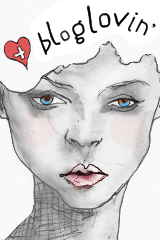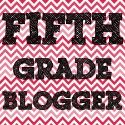.jpg)
One of my favorite units to teach during the year is our chemical reaction unit. There are so many nifty experiments the students can participate in. It really gets them excited and engaged in the concept. They LOVED the elephant toothpaste experiment. It's an exciting science experiment that allows for great discussions on chemical reactions. You can do this as a demonstration or turn it into a science experiment. I decided that with this experiment, I would do it and my students would observe and discuss in their groups what was happening. I didn't want them handling the hydrogen peroxide (the experiment uses a strong peroxide). Once the foam began to come out of the bottle I allowed a few students to touch the bottle to feel the warmth created by the chemical reaction that took place in the bottle.
What you will need:
- clean 16 ounce plastic bottle
- 1/2 cup 20 volume hydrogen peroxide liquid (20 volume is a 6% solution, you will need to purchase it from a beauty supply store) Do not use anything higher than a 6% solution either.{It is important to use 6%, the 3% peroxide from the grocery store will NOT work as well}
- 1 tablespoon (one packet) of dry yeast
- 3 tablespoons of warm water
- liquid dish soap
- food coloring
- tray (for easy clean up)
- funnel
- small bowl/cup
- safety goggles
- Add 5-6 drops of food coloring into the bottle.
- Add about 1 tablespoon of liquid dish soap into the bottle and wish the bottle around to mix it.
- In a separate small cup/bowl, combine the warm water and the yeast (the yeast will speed up the reaction) together and mix for about 30 seconds.
- Now pour the yeast water mixture into the bottle (use a funnel) and watch the foaming action begin!
- Make sure you stand away from the bottle (not directly above it) the foam forms quickly and can shoot quite high out of the bottle.
What's happening?
Hydrogen peroxide naturally breaks down into water and oxygen. Each foam bubble is filled with oxygen. The yeast speeds up the reaction. The yeast acted as catalyst to remove the oxygen from the hydrogen peroxide. Since it did this very fast, it created lots and lots of bubbles.Dish soap catches the oxygen and makes bigger bubbles and the food coloring makes it look cool. The bottle gets warm because it created a reaction called an exothermic reaction. That means it not only created foam, but it created heat too. The foam produced is just water, soap, and oxygen so you can clean it up with a sponge and pour any liquid left in the bottle down the drain.
Questions for our experiment
In their science journals, my students discussed and answered the following questions:
- Does the amount of yeast change the amount of foam produced?
- Does the experiment work as well if you add the dry yeast without mixing it with water?
- Does the size of the bottle affect the amount of foam produced?
The questions came from Science Bob. I love his website, lots of fun experiments and he has some great videos on his site. Another great site filled with experiments is Steve Spangler Science.
Check out the video below for an awesome video of the elephant toothpaste in action! Now his elephant toothpaste was done at an extreme level (not to be done at home or in the classroom).
Our foam came out slowly for some reason the first time. Once it slowed way down, I had a couple students feel the bottle to feel the warmth that was created.
.jpg)
.jpg)
.jpg)





.jpg)







.jpg)






.jpg)
.jpg)
.jpg)
.jpg)
.jpg)




.jpg)









.jpg)

.jpg)

.jpg)
.jpg)


.jpg)
.jpg)

.jpg)
.jpg)
.jpg)


.jpg)
.jpg)









